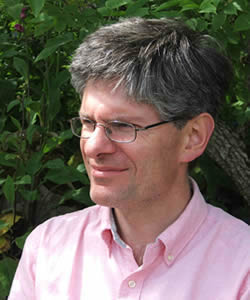Retreat: the industrialised, liberal West is living through an epochal, unprecedented wave of secularization. We’ve had several centuries of increasingly nominal religious adherence, punctuated by revivals, but our modern phenomenon—of rapidly growing swathes of society claiming that they have no religion—is new. This isn’t because religion has collapsed intellectually: the purely intellectual case against Christianity looked considerably stronger in 1900 than it does now, and in any case, we’ve surely learned by now that intellectual arguments don’t have much purchase on how we actually live our lives. Instead, it has collapsed morally. In the wake of World War II, our culture has become deeply committed to humanist ethics, to the point where it neither needs nor especially values religious ones any more. Once the most potent moral figure in the Western imagination was Jesus. Now it is Hitler, who taught our age what absolute evil is.
But that humanist ethic is built on the moral bedrock of Christian and Jewish ethics, which assume—unlike, say, ancient Rome—that slavery and cruelty are bad, and that compassion and human equality are good. So we are abandoning our inherited religious culture because it doesn’t live up to its own values, and we’re doing so using the tools that that culture itself has taught us. That is, in effect, a re-run of the Reformation.
And like the original Reformation, the outcome hangs in the balance. Is this a case of a revolution eating itself, a self-destructive pursuit of impossible purity? Or is it a re-formation, an authentic attempt to lay hold of what was truest about the faith we’ve always held? Or both?
Then there is resurgence. For half a century, two very different religious forces have been sweeping across the globe. Jihadist Islam might look like the Reformation’s heir: public, attention-grabbing, focused on political power, male-dominated, ready to use violence and to celebrate martyrdom. But we cannot map Christianity’s conflicts easily onto Islam, with its own distinct deep logic and culture.
But Pentecostal, renewalist Christianity—chiefly but not entirely Protestant—is something else: usually apolitical, shunning a public role, unstructured and informal, often spreading through family networks and women’s influence. While jihadism has been transfixing the world, Pentecostalism has quietly become the religion of half of Africa, a quarter of Latin America, and rapidly growing populations in East Asia before outsiders have really noticed. It has done it by offering, not revolution tomorrow, but salvation and spiritual transformation for individuals here and now.
So a new religious movement is preaching a radically simplified and democratized gospel of salvation, promising to restore Christianity to its ancient origins and in the process creating something new. That, too, is a re-run of the Reformation.
And once again, the outcome hangs in the balance. Will this movement ossify into self-serving establishments, or collapse in scandal and chaos? Will it deal with its rivals, religious and secular, by confronting them, ignoring them, engaging with them, or imitating them?
The history of Reformation, unfortunately, cannot tell us where secularism, Pentecostalism, or indeed jihadism are going to go from here. But it can tell us three things. First, these questions matter. How those vast religious trends play out and interact will be one of the dominant stories of our age, and they deserve our attention. Second, movements of religious reform are exceptionally liable to the law of unintended consequences. Martin Luther did not intend to start “the Reformation,” and he barely managed to ride the tiger. None of our modern religious, or secular, reformers know where they are going, even if they think they do. And third, “Reformation” is not an event which happens and is done. It is a ceaseless, churning process of reinvention in which movements have barely established themselves before they are thrust aside by some fresh newcomer. The moment a religious, or secular, movement begins to seize the limelight, it is time to look to the wings to see which new character is about to burst onto the stage—or, in the spirit of re-formation, which old one is about to make a dramatic return in a new guise.

